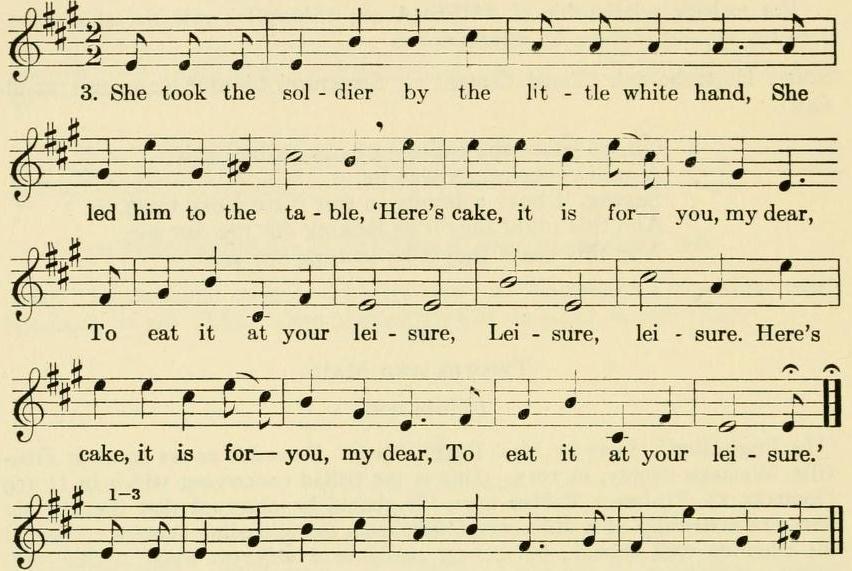The Bugle Boy- Tillett (NC) 1922 Brown Coll.
Brown Collection of NC Folklore
49. Trooper and Maid
(Child 299)
Child lists a number of broadside ballads of the same general quality and character as this, but the identity of this particular one is assured by its metrical structure with its feminine rhymes on the even-numbered lines and the "able-stable-table" rhymes. For its occurrence as traditional song, see BSI 167. It is found, though not very frequently, both in New England and in the South, in the Ozarks (OFS i 213-14), and as far west as Indiana (in Indiana in combination with 'Young Hunting'). Very likely its actual currency is greater than its appearance in collections would indicate.
[This version is a fragment and it's not clear in Brown where the first verse is so I've taken verse 1 from Brown's 1915 version. A version with a similar form is Sharp B from Stockton in TN. I've filled out the verses and two more would need to added in order to make this reasonably complete.]
1 She look-ed east and she look-ed west,
She saw the soldier a-comin';
She knew him by the horse,
Because she dearly loved him, loved him, loved him,
She knew him by the horse,
Because she dearly loved him.
2 She took the soldier's horse by the bridle rein,
She led him to the stable,
[Saying: he's oats and corn for your horse,
Feed him when you're able, you're able, you're able,
Saying: he's oats and corn for your horse,
Feed him when you're able.]
She took the soldier by the little [lily] white hand,
She lead him to the table,
Here's cake, it is for you, my dear,
To eat it at your leisure, leisure, leisure,
Here's cake, it is for you, my dear,
To eat it at your leisure.
49(1) 'The Bugle Boy.' Sung by C. K. Tillett. Recorded at Wanchese, Roanoke Island, December 29, 1922. The last two lines of a varied third stanza are here repeated, thereby extending the melody.

For melodic relationship cf. **TBV 606, No. 51A, measures 7-10 and 13-15 with our 5-7 and 11-I3. Scale: Hexachordal, plagal. Tonal Center: e. Structure: nmmi (4,6,4) = inverted barform. The m is terminally incremented.
2 She took the soldier's horse by the bridle rein,
She led him to the stable,
(The record breaks off here.)